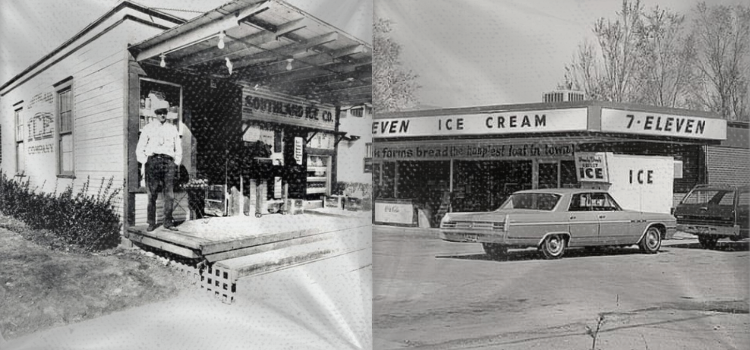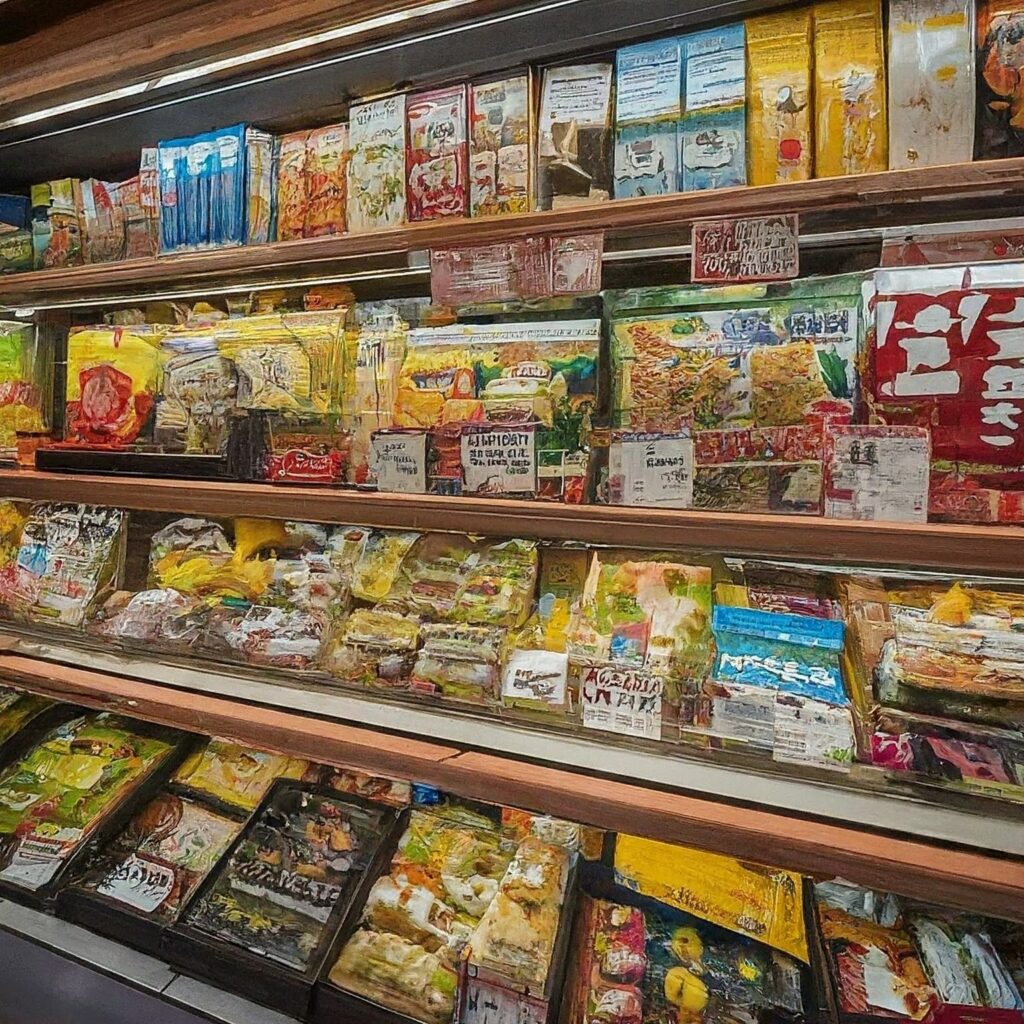Picture this: you stroll into your local 7-Eleven, not for a quick Slurpee fix or a questionable hot dog, but for a steaming bowl of ramen or a perfectly crafted sushi roll. Sounds far-fetched? Not if 7-Eleven has its way. The convenience store giant is betting big on a culinary revolution with 7-Eleven Japanese food, taking inspiration from its wildly successful Japanese counterpart. But can they really swap taquitos for tempura and win over the hearts (and stomachs) of American snackers? Buckle up, because we’re about to dive deep into this bold gamble and explore whether Japanese flavors have what it takes to revitalize the American Slurpee empire.
From Humble Texas Roots to a Global Culinary Crossroads
To understand this audacious move, we need to rewind to 1927. Dallas, Texas: An ice dock worker named Joe C. Thompson had a lightbulb moment – why not sell essentials like milk, bread, and eggs right from the ice house? This simple idea spawned the modern convenience store, initially dubbed Tote’m. By 1946, they rebranded as 7-Eleven, proudly flaunting extended hours that were revolutionary for the time.

Fast forward to 1991, and Japanese company Ito-Yokado acquires a controlling stake. This wasn’t just a business transaction; it was a cultural fusion. The Japanese brought a fresh perspective on what 7-Eleven could be, and that vision included some seriously good grub. They recognized the potential to transform the convenience store into a go-to spot for fresh, flavorful, and fast meals, leading to the creation of 7-Eleven Japanese food options.
7-Eleven Japan: A Gastronomic Paradise, Not Just a Pit Stop
Imagine stepping into a 7-Eleven, not for a last-minute energy drink and a dubious sandwich, but for a gourmet experience. That’s the norm in Japan. Say goodbye to stale donuts and sad nachos; these stores are immaculate, brightly lit, and brimming with fresh, made-to-order food that rivals any restaurant.
Think traditional onigiri (rice balls) and bento boxes, each a miniature masterpiece, alongside trendy ramen creations with complex broths and inventive toppings. The sushi is so fresh it practically winks at you, and the karaage (fried chicken) is a legend in its own right, boasting a shatteringly crisp exterior and succulent meat. It’s not just about the food itself, though—the presentation is artful, the service is top-notch, and the whole experience is unexpectedly delightful. This is the essence of 7-Eleven Japanese food in Tokyo.
The American 7-Eleven: An Identity Crisis in the Snack Aisle
Meanwhile, back in the States, 7-Eleven has been treading water. Sure, they have their die-hard Slurpee fans and the occasional taquito enthusiast, but let’s face it, their culinary reputation is far from Michelin-starred. The problem isn’t just the food; it’s the entire experience. Limited options, questionable freshness, and a general lack of pizzazz have left American consumers yearning for more. With competitors like Wawa and Sheetz raising the bar, 7-Eleven is at risk of becoming yesterday’s news.
This stagnation stems from various factors, including a focus on pre-packaged goods and a reliance on traditional convenience store fare. While these offerings might have been enough in the past, they no longer resonate with the evolving American palate. The rise of health-conscious eating, the growing appetite for international cuisine, and the demand for fresh, high-quality ingredients have created a whole new playing field for 7-Eleven.
Reinventing the Wheel (or the Roller Grill): It’s Not Just About Sushi (7-Eleven Japanese food)
So, what’s 7-Eleven’s game plan? They’re not simply sprinkling some seaweed and wasabi on the menu and calling it a day. They’re going all-in, constructing state-of-the-art kitchens, collaborating with local chefs, and sourcing the finest ingredients available to bring 7-Eleven Japanese food to the U.S.

The revamped menu will be a harmonious blend of Japanese-inspired dishes and American favorites. Picture ramen burgers, sushi burritos, and matcha-infused desserts sharing the spotlight with classic pizza and chicken wings. It’s about providing something for everyone, whether you’re a health-conscious eater, a culinary adventurer, or simply craving a quick and delicious bite.
But wait, there’s more! This transformation isn’t confined to the menu alone. 7-Eleven is also overhauling its store design, cultivating a more welcoming and contemporary ambiance. They’re embracing technology to elevate the customer experience, introducing features like mobile ordering and self-checkout kiosks. And they’re championing sustainability, minimizing waste and adopting eco-friendly practices.
Will It Work? The Multi-Billion-Dollar Question
The success of this ambitious makeover hinges on several critical factors:
- Quality Control: 7-Eleven must guarantee consistent quality across all locations. Nobody wants a soggy onigiri or a lukewarm ramen bowl. This will necessitate comprehensive staff training and meticulous quality control measures throughout the supply chain.
- Marketing and Branding: They need to effectively communicate this new identity to consumers. It’s not enough to just have good food; people need to know about it and be eager to try it. A well-executed marketing campaign showcasing the new menu and the Japanese influence could be pivotal in attracting new customers.
- Cultural Adaptation: Japanese flavors might require some adjustments to suit American tastes. Being overly authentic could alienate some customers, while being too Americanized might diminish the novelty. Striking the right balance between authenticity and familiarity will be a delicate act.
The Risks and Rewards: A High-Stakes Game (7-Eleven Japanese food)
This bold transformation is not without its perils. Some customers might be hesitant to embrace the new offerings, while others might miss the familiar comforts of the old menu. There’s also the challenge of recreating the Japanese 7-Eleven experience in a different cultural context.
However, the potential rewards are substantial. By offering a diverse, high-quality food menu that caters to evolving consumer preferences, 7-Eleven could capture a new generation of customers and revitalize its brand image. The success of this transformation could also inspire other convenience store chains to follow suit, sparking a broader culinary renaissance in the industry. The inclusion of 7-Eleven Japanese food could be a key factor in attracting a more diverse clientele.
Related: Ditch the Mega-Mart, Embrace the Eco-Cart: Aldi’s Sustainable Shopping Revolution
So, are you ready to swap your Slurpee for a steaming bowl of ramen? The future of 7-Eleven might just surprise you with its 7-Eleven Japanese food offerings.
Now, it’s your turn! What do you think about 7-Eleven’s ambitious culinary makeover? Are you excited to try their new Japanese-inspired dishes, or do you prefer the classic convenience store fare? Share your thoughts and predictions in the comments below – let’s get this conversation started!
